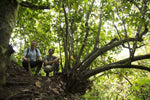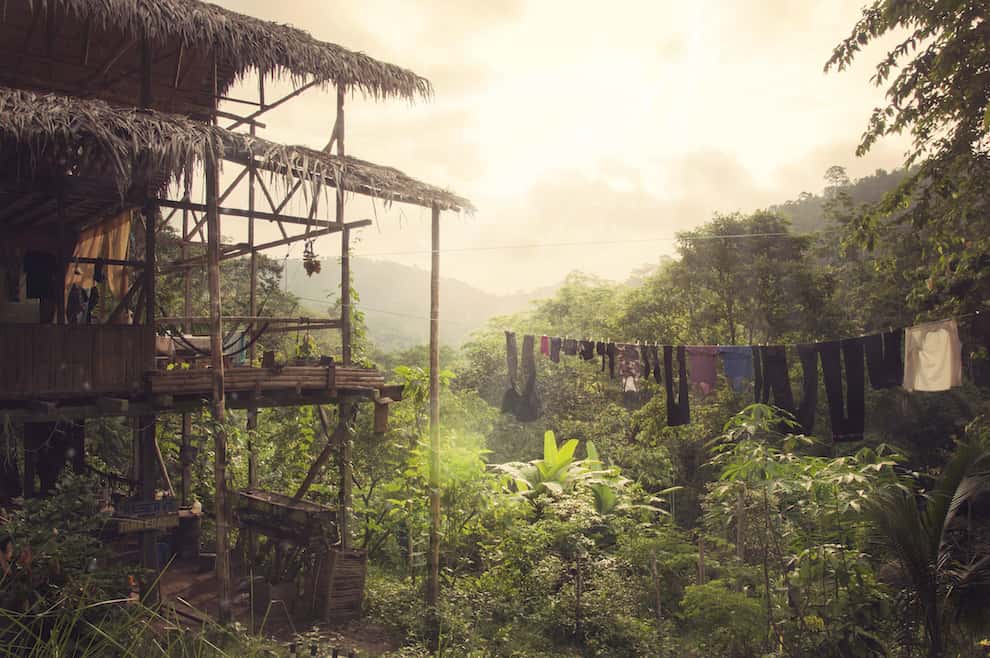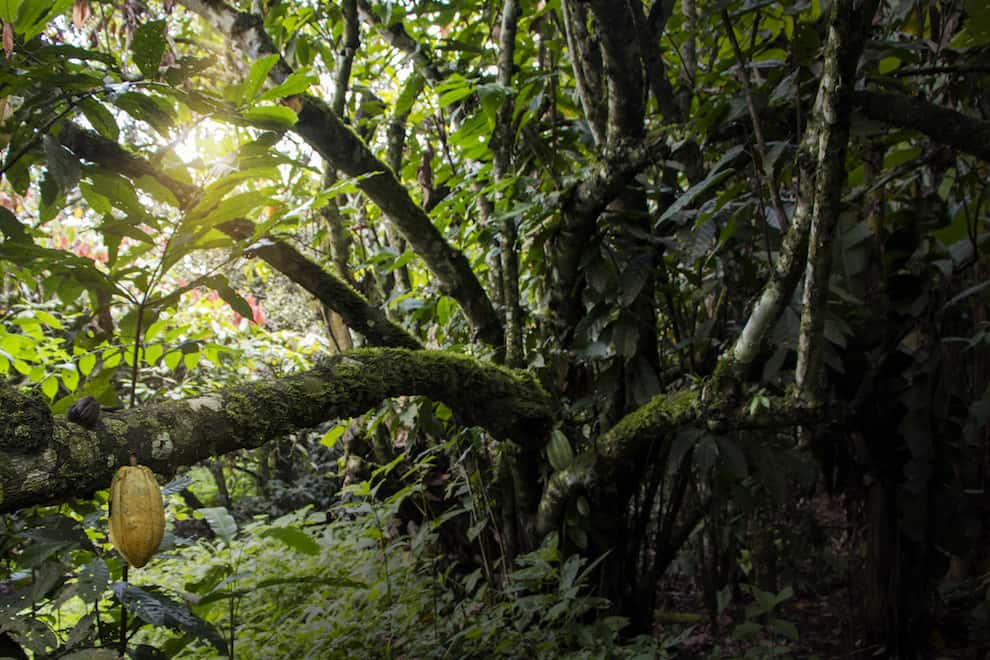
Deleted Scenes from National Geographic
, by Jerry Toth , 5 min reading time

, by Jerry Toth , 5 min reading time
National Geographic recently aired a feature about our work in Ecuador on their Explorer television series. But the most important footage was excluded from the final cut. Here's what they didn't show...
If you haven’t yet seen the National Geographic Explorer episode, you may be able to find it on iTunes, YouTube or Amazon for a few dollars per episode. It's Season 11, originally aired on January 28th, 2019, and the name is "Chocolate Crusaders."
*
Last year National Geographic approached us about doing a story together about the existential threats to cacao. They wanted to create a television episode for their Explorer series but hadn’t yet decided on which angle to take. We pitched the story of the conservation work we’re doing to save Ancient Nacional cacao from extinction. We’re doing this by planting a “genetic bank” of Ancient Nacional cacao trees in the protected forest preserve that I helped create through my rainforest conservation work. That was the story.
They pitched the idea to their producers and the story was eventually greenlighted. They sent a six-person crew down to Ecuador and spent a week shooting the episode with us. It was a really fun week and we got all the footage that was needed to tell this story. But only half of the story was included in the show that actually aired. The most important part was left on the floor of the editing room.
 Deleted scene: planting an Ancient Nacional cacao seedling the Jama-Coaque Reserve.
Deleted scene: planting an Ancient Nacional cacao seedling the Jama-Coaque Reserve.
I’d like to use this blog post to share with our readers the rest of the story. In the version of the show that aired on television, it is made to seem that our method of conserving Ancient Nacional is by charging a very high price for our chocolate. No mention was made of the work we’re actually doing to conserve Ancient Nacional, in terms of getting on our knees in the mud and planting 100% pure Nacional cacao trees in the Jama-Coaque Ecological Reserve. That side of the story was captured on camera—it just didn’t make its way into the show.
The work we’re doing on the ground is a collaborative effort between To’ak (the chocolate company) and Third Millennium Alliance (the nonprofit conservation foundation). In the interest of telling a cleaner story, only To’ak was mentioned in the final cut. The conservation work that both organizations are doing together in the Jama-Coaque Reserve was omitted.
In fairness to the producers, planting cacao seedlings probably doesn’t make for exciting television. But it’s the part of my work that I most care about and that I spend the most time and energy doing, and it’s arguably the part of our collective work that will have the most lasting impact on the future of heirloom cacao—possibly for many generations to come. It’s unfortunate that this side of the story did not make the final cut. Instead, the emphasis was placed on how much we charge for one of the products that we make.
The other part that was included—fortunately—were the old-growth cacao trees in Piedra de Plata, along with the some of the farmers who cultivate them. Don Fébres and Don Divino got a chance to say a few words, which was good to see. And the beauty of the valley of Piedra de Plata was well-represented.
Everything that was shown was well-done. The photography was fantastic, and Jago Cooper brought an added layer of color and context to the story.

The "Bamboo House" in the Jama-Coaque Reserve.
Bantering with Jago while driving the pickup truck from point A to point B was one of my favorite parts of the whole process—both on and off camera.
There were only two shots from the Jama-Coaque Reserve that made it to the final cut: me standing at the balcony of the Bamboo House, and roasting cacao over a flame and smelling the aroma. But merely the fact that National Geographic came to the Reserve to do a story was very exciting for our entire team at Third Millennium Alliance (TMA), especially the local guys who have been working on this project for many years. They were pleased to see the outside world is taking an interest in what’s going on their forest.
It was exciting, too, for the whole To’ak team. The story wasn’t told the way we pitched it, but at least part of the story was told and is reaching a wider audience. This experience has also given rise to the idea of To’ak and Third Millennium Alliance co-producing our own mini-documentary on the conservation work we’re doing together. It will be an opportunity to dig a little deeper and tell the whole story.
 Cuttings from this 100-year-old Ancient Nacional tree in Piedra de Plata—identified and DNA-verified by To'ak—have been grafted onto seedlings planted in the Jama-Coaque Reserve by TMA.
Cuttings from this 100-year-old Ancient Nacional tree in Piedra de Plata—identified and DNA-verified by To'ak—have been grafted onto seedlings planted in the Jama-Coaque Reserve by TMA.
Overall, I was impressed by the professionalism of the crew and I genuinely enjoyed working with each of them. I also think the editors did a good job, all things considered. They were asked to tell a complex story in just ten minutes of running time, which is not an easy task. I’m grateful to National Geographic for bringing attention to cacao trees in general and Ecuadorian cacao in particular.
In the meantime, the work continues. Putting a tree into the ground is only one element of the process of cultivating cacao and raising it to maturity, let alone trying to preserve its genetic line. For more information on this subject, feel free to peruse any of the blog posts linked below.
Additional Reading:
 Deleted scene: planting one of the Ancient Nacional seedlings (sourced from Piedra de Plata) in the Jama-Coaque Reserve's "Genetic Bank." In three years, this single seedling will grow enough vegetative material to reproduce dozens of Ancient Nacional trees each year—effectively resurrecting the world's most prized cacao variety from the brink of extinction.
Deleted scene: planting one of the Ancient Nacional seedlings (sourced from Piedra de Plata) in the Jama-Coaque Reserve's "Genetic Bank." In three years, this single seedling will grow enough vegetative material to reproduce dozens of Ancient Nacional trees each year—effectively resurrecting the world's most prized cacao variety from the brink of extinction.